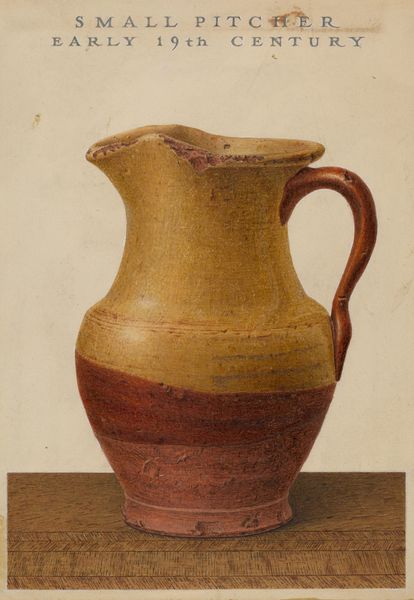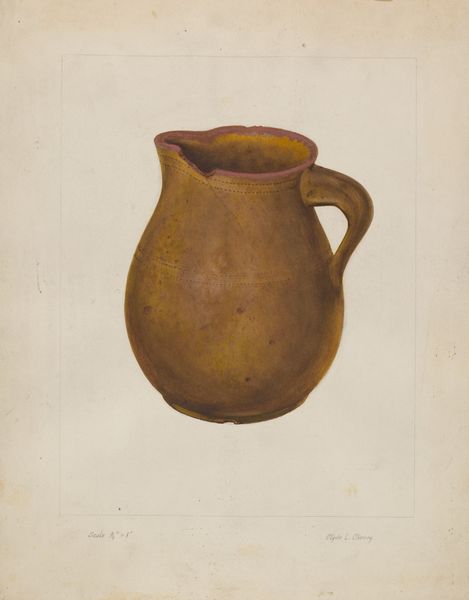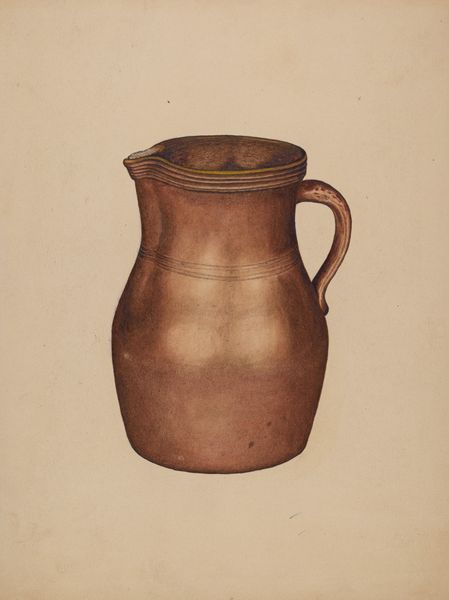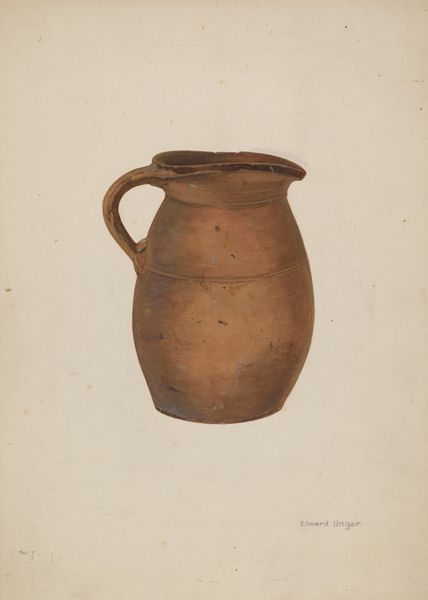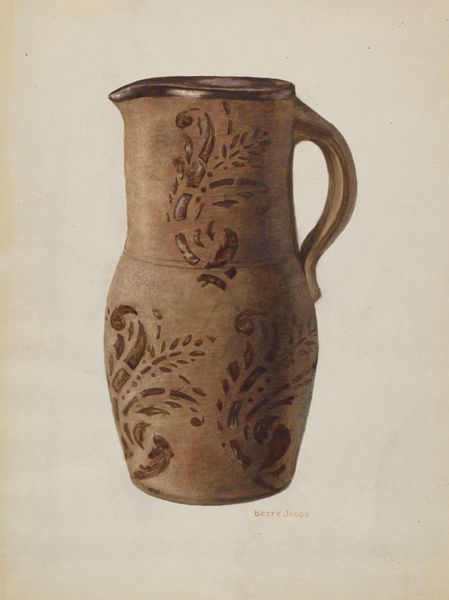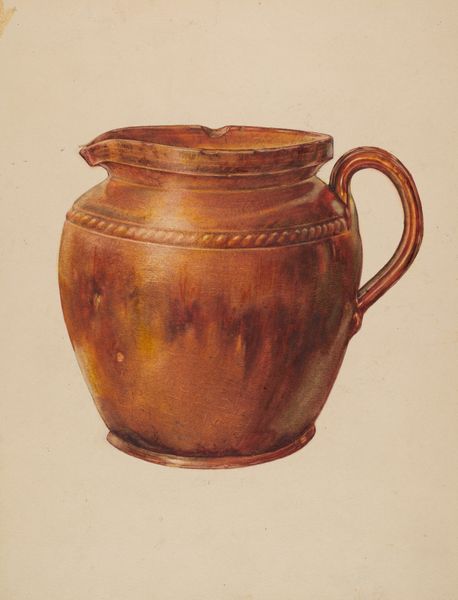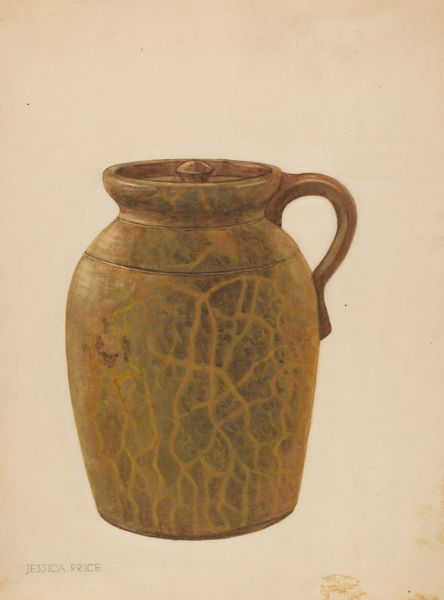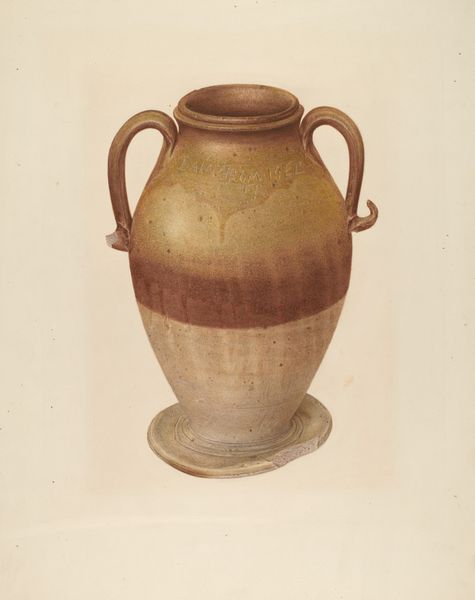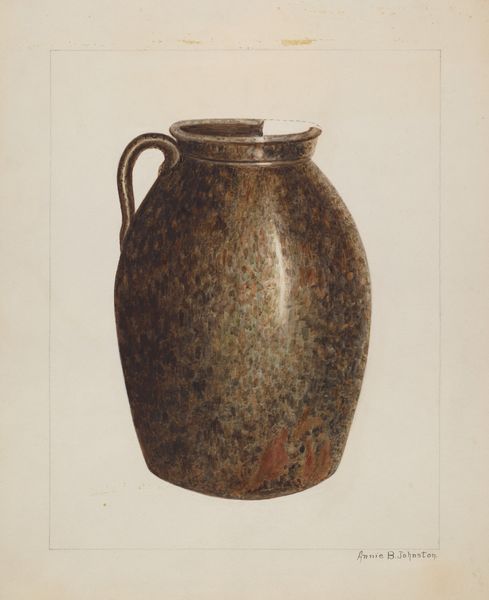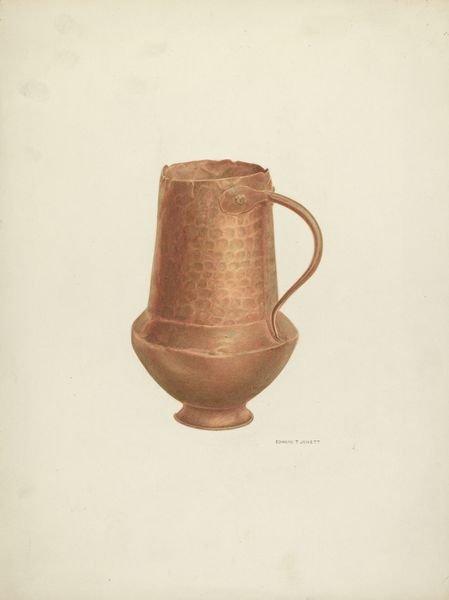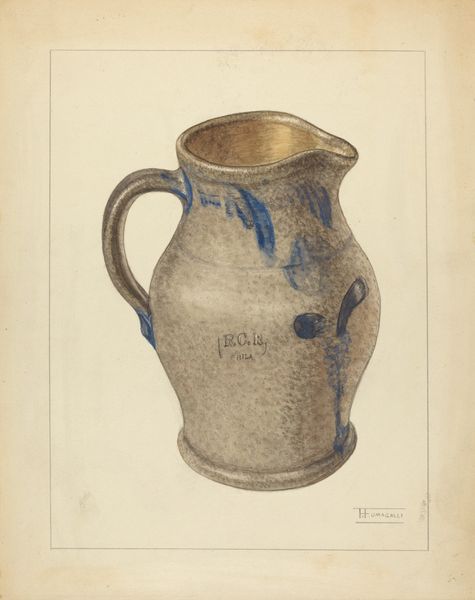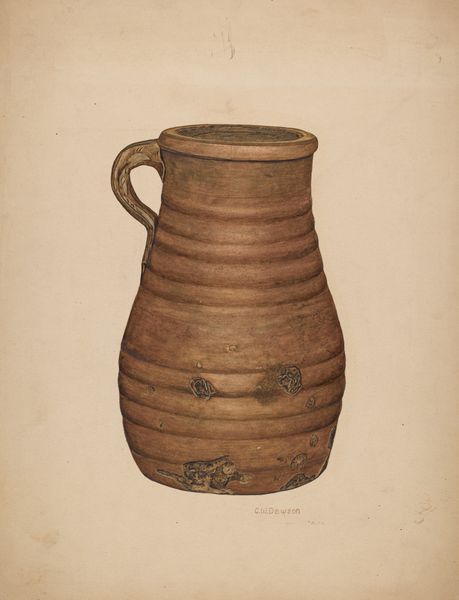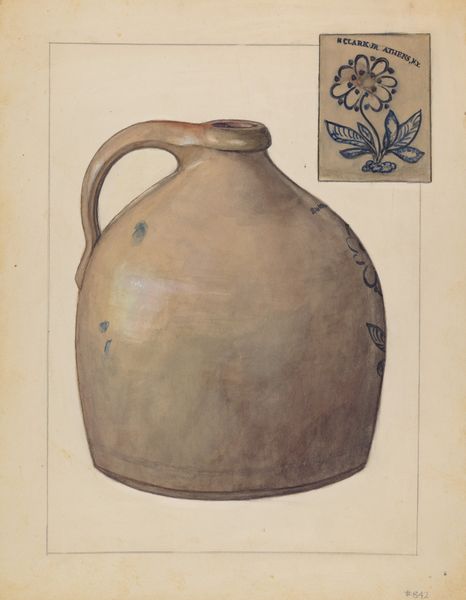
drawing, watercolor
#
drawing
#
watercolor
#
watercolour illustration
#
watercolor
Dimensions: overall: 28.9 x 22.9 cm (11 3/8 x 9 in.) Original IAD Object: 10" High 9 1/2" Dia.(top) 6" Dia.(base)
Copyright: National Gallery of Art: CC0 1.0
Curator: This charming watercolor, dating from around 1937, is simply titled "Pitcher" and it's by Yolande Delasser. The artist chose to depict her subject with detailed realism and in full-view, what strikes you first about it? Editor: Well, immediately, I’m drawn to the warm, earthy tones. It evokes feelings of rustic simplicity, of folk traditions and, for some reason, I feel a twinge of melancholy looking at the dark coloration on the body. Curator: Delasser's approach highlights an intriguing interplay between American folk traditions and artistic representation. I am particularly interested in the social and historical forces at play. This was produced, as I said, in 1937, during a time when there was huge public art patronage in the United States under Roosevelt and the WPA initiative. Do you believe this watercolor painting might have been made under the scope of this program? Editor: Possibly, the artist's detailed rendering suggests a focus on historical objects— almost like a documentary impulse that attempts to save national cultural memories through folk representations. Note, though, the clear “1776” inscribed near the upper part. Would this refer to The Declaration of Independence and the founding era, maybe subtly suggesting those principles must not be abandoned during times of need and crisis? Curator: That's a astute observation, certainly the number speaks to American foundational myths and historical consciousness, a recurrent theme throughout art history! There is a certain reverence in the depiction, imbuing a utilitarian object with greater symbolic importance. Editor: Exactly. By choosing a pitcher, a vessel of everyday life, the artist elevates the ordinary into the extraordinary, perhaps suggesting the importance of simple values during complicated times. It makes me wonder if Delasser intended it as an object that can withstand the trials and tests that were starting to occur in society back then? Curator: The social relevance embedded within visual imagery is incredibly poignant, wouldn't you agree? Especially within works commissioned during times of crisis! Delasser definitely gave a voice to shared cultural experience of resilience, of what is necessary in moments of transition. Editor: Definitely, after looking more into the visual weight carried by the chosen symbols and hues, I now wonder more about what the symbolism suggests regarding the cultural psyche during those years. Curator: And I’m pondering further on how the support systems available for American artists in the 30’s actually molded artistic expression, influencing what symbols and styles became most prominent.
Comments
No comments
Be the first to comment and join the conversation on the ultimate creative platform.
